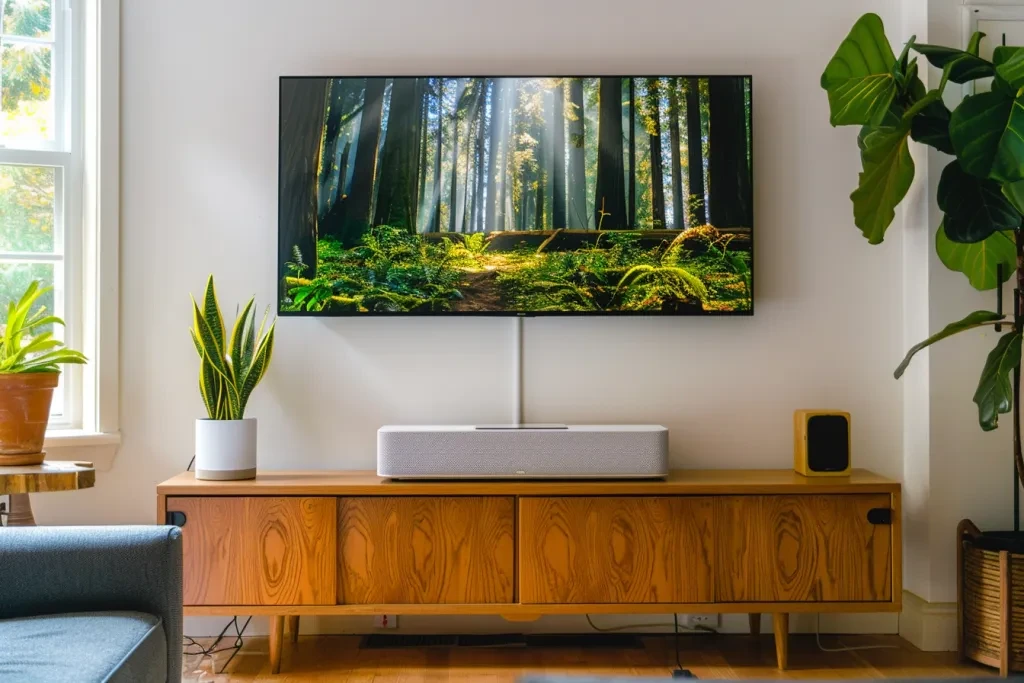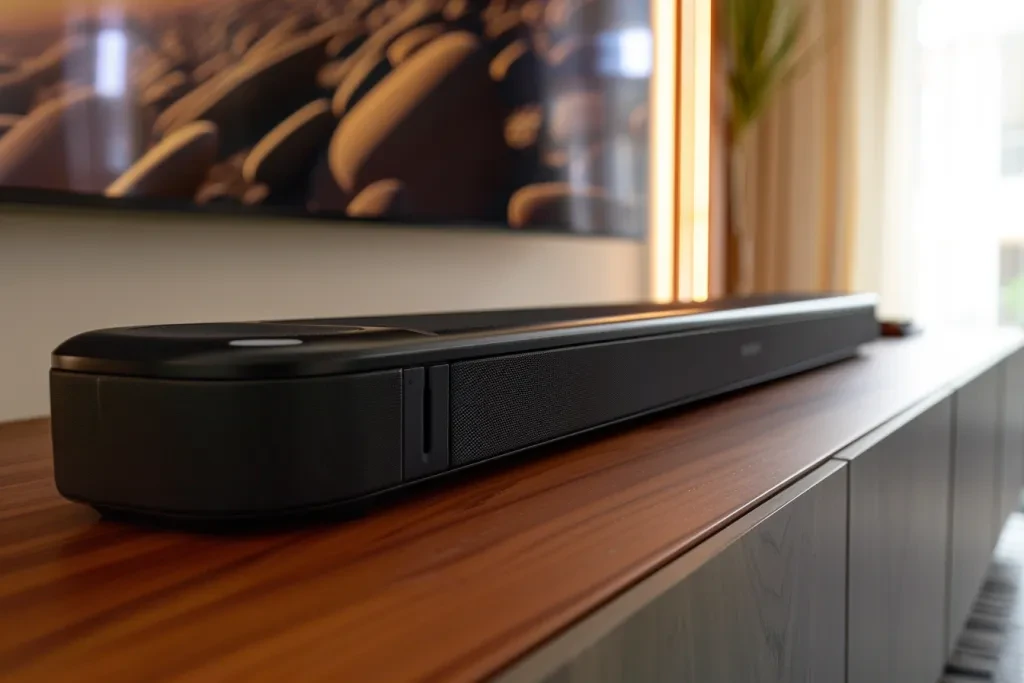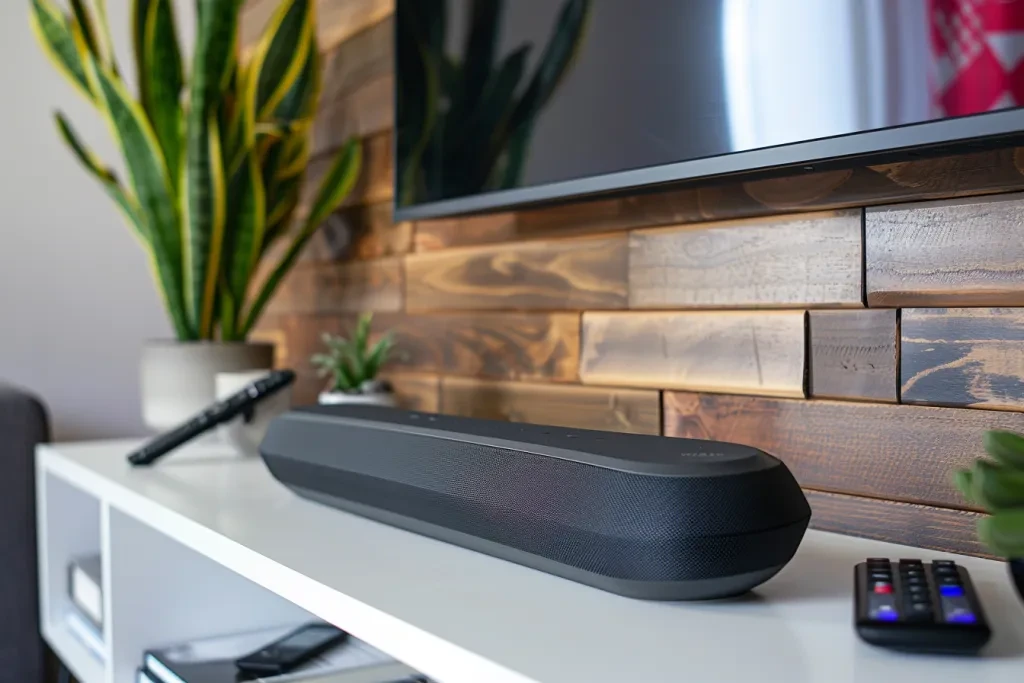In the quest for a superior home entertainment system, the soundbar has emerged as a pivotal component for audiophiles and casual viewers alike. This sleek device not only enhances the audio quality of your TV but also simplifies your setup, merging multiple speakers into one. Whether you’re a movie buff, a sports fan, or a gaming enthusiast, understanding how a soundbar can transform your TV viewing experience is essential.
Table of Contents:
1. What is a soundbar for TV?
2. How does a soundbar work?
3. Benefits and drawbacks of a soundbar
4. How to choose a soundbar
5. How to use a soundbar
What is a soundbar for TV?

A soundbar for TV is a speaker system designed to improve the audio quality of your television with minimal setup and space requirements. Unlike traditional home theater systems that may require multiple speakers placed around a room, a soundbar consolidates these speakers into a single, compact unit that can be placed directly under or above your TV. This not only enhances the aesthetic appeal of your setup but also simplifies the installation process.
Soundbars come in various sizes and configurations, from basic models that significantly improve your TV’s built-in speakers to more advanced options that include wireless subwoofers and support for surround sound technologies. Some models even offer smart features, such as voice control and compatibility with multi-room audio systems, allowing for a more integrated home entertainment experience.
The core idea behind a soundbar is to provide a rich, immersive sound experience without the complexity and clutter of traditional surround sound systems. By employing advanced audio technologies and clever speaker arrangements, soundbars can simulate a multi-speaker setup, giving the illusion of sound coming from different directions. This makes them an ideal solution for anyone looking to enhance their TV’s audio without the hassle of a full-blown home theater system.
How does a soundbar work?

At its most basic, a soundbar works by receiving audio signals from your TV and then using its built-in speakers to project the sound more effectively than your TV’s speakers can. This is achieved through a combination of speaker drivers positioned within the soundbar to create a wider soundstage and, in some cases, simulate surround sound effects.
Most soundbars connect to TVs via optical or HDMI cables, with HDMI ARC (Audio Return Channel) being the preferred method for its ability to handle higher-quality audio formats and simplify the setup process by using a single cable for both audio and video. Once connected, the soundbar acts as the primary audio output, significantly enhancing dialogue clarity, bass performance, and overall sound quality.
Advanced soundbars incorporate various technologies such as Dolby Atmos or DTS:X to create a more immersive listening experience. These soundbars use additional speakers that project sound upwards, reflecting off the ceiling to simulate the effect of sound coming from above. This, combined with traditional front-firing speakers, can envelop the listener in a 360-degree sound field, adding depth and dimension to movies, music, and games.
Benefits and drawbacks of a soundbar

The primary benefit of a soundbar is its ability to significantly improve TV audio quality in a simple, stylish, and space-saving design. Soundbars are particularly beneficial for those with modern, flat-panel TVs, whose built-in speakers often lack the power and clarity needed for an immersive viewing experience. Additionally, the ease of setup and use, with fewer cables and components than a traditional surround sound system, makes soundbars an attractive option for most households.
However, soundbars are not without their drawbacks. While many models offer impressive sound quality, audiophiles or those seeking the ultimate home theater experience may find even the best soundbars a compromise compared to a full set of discrete speakers. The simulated surround sound of a soundbar, though effective, cannot fully replicate the immersive quality of a true multi-speaker setup. Furthermore, the all-in-one design of a soundbar means that if one component fails, the entire unit may need to be replaced, unlike traditional systems where individual components can be swapped out.
How to choose a soundbar

When choosing a soundbar, consider the size of your room and the primary use of your sound system. For smaller rooms or apartments, a simple two-channel soundbar may suffice, while larger spaces may benefit from a more powerful model with a subwoofer and support for surround sound technologies. Additionally, consider the connectivity options; ensure the soundbar has the appropriate ports to connect to your TV and other devices, and look for features like Bluetooth or Wi-Fi for streaming music from your phone or tablet.
Another important factor is compatibility with your existing devices and desired audio formats. If you have a 4K TV, for example, choosing a soundbar that supports 4K pass-through will ensure you get the best picture quality. Similarly, if you want to experience Dolby Atmos or DTS:X content, make sure the soundbar is equipped to handle these formats.
Lastly, don’t overlook the importance of ease of use. A soundbar with a simple, intuitive interface and remote control can greatly enhance your viewing experience. Some soundbars also offer app control, providing additional flexibility and customization options.
How to use a soundbar

Using a soundbar is generally straightforward, but getting the most out of your device may require a bit of setup. First, connect your soundbar to your TV using the most appropriate method, typically HDMI ARC for the best audio quality. Once connected, you may need to adjust your TV’s audio settings to ensure it is outputting sound through the soundbar instead of its built-in speakers.
For those with advanced soundbars supporting surround sound formats, positioning is key. While the soundbar itself should be placed as close to the TV as possible, any additional speakers or subwoofers should be positioned according to the manufacturer’s recommendations to ensure optimal sound quality. Finally, take the time to explore any additional features your soundbar may offer, such as adjustable EQ settings, to tailor the sound to your preferences and room acoustics.
Conclusion
A soundbar for TV is a versatile and effective solution for enhancing your home entertainment system. By understanding how soundbars work, their benefits and drawbacks, and how to choose and use one, you can dramatically improve your TV viewing experience with minimal fuss. Whether you’re watching your favorite movie, streaming a concert, or gaming, a soundbar can bring your audio to life, making every moment more immersive and enjoyable.




